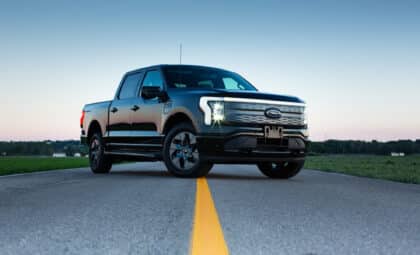The U.S. Air Force is shaking things up by planning to use Tesla Cybertrucks as missile targets during live-fire training exercises. This unusual move shows just how much military needs and cutting-edge tech are starting to mix, revealing a new chapter in ties between the Pentagon and big tech companies.
Getting the Tesla Cybertrucks
The Air Force is in the process of grabbing two Cybertrucks specifically for “target vehicle training flight test events.” These trucks will eventually be taken out in the tests, serving as live missile targets on the field. In addition to the Cybertrucks, they’re also hunting for 31 other vehicles—from sedans to bongo trucks—for similar roles, as noted in filings submitted to the System for Award Management.
The appeal of the Cybertrucks comes from their “aggressively angular and futuristic design” and an “unpainted stainless steel exoskeleton.” While the vehicles don’t need to run like clockwork, they must stay intact and be able to roll. The idea is that potential opponents might start using similar vehicles because they can shrug off certain types of damage.
What this means for military-tech ties
This move is a sign of how the Pentagon and major tech firms are starting to work more closely together. It points to an ongoing shift where the latest technologies are being woven into defense strategies. Gordon Adams, a professor at American University who studies U.S. foreign policy, sees this as a sign that the military and private tech companies are getting more entwined.
Adams even compared it to “the camel’s nose under the tent” when it comes to the Department of Defense’s partnerships with Elon Musk and his ventures. He points out that this is part of a wider trend where the DoD is increasingly relying on private tech through its contracts.
Existing deals with Elon Musk’s companies
Elon Musk’s companies are already well in the game when it comes to government contracts. SpaceX has bagged $22 billion in deals with the Pentagon for launch services, and Starlink is busy providing satellite connectivity that supports Defense Department operations and aids military efforts in Ukraine.
These partnerships show how deeply Musk’s enterprises are enmeshed with national defense, strengthening his role in this space even further.
Other tech giants getting involved
And it’s not just Musk’s companies getting in on the action. Other tech heavyweights are also making big moves with the military. Palantir Technologies, co-founded by Peter Thiel, has clocked in more than $1 billion in quarterly revenue and secured a 10-year, $10 billion software contract with the U.S. Army. OpenAI also landed a $200 million deal with the Pentagon to boost its AI capabilities.
These arrangements put a spotlight on how tech companies like Palantir and OpenAI are becoming key players in advancing military technology.
Looking ahead at military-tech integration
The Defense Department is leaning heavily on private sector contracts, which make up more than half of its total obligations—$445 billion out of $755 billion for fiscal 2024. Started during the Obama administration and ramped up under Trump, these partnerships show just how much the military is leaning on innovative tech.
As Gordon Adams puts it, “We’re going full-bore into the privatization of technology through the Defense Department using high-tech capabilities.” Even though some worry about how the balance of political power could steer technological developments, there aren’t any plans at the moment to put this trend on hold or to reexamine these partnerships.
The U.S. Air Force’s unconventional use of Tesla Cybertrucks is just one example of how modern tech is meeting military needs in surprising ways—a sign that the world of defense is changing fast with high-tech designs now part of the battlefield mix. The Tesla’s shift towards AI is redefining its identity and influencing how its products are perceived in various industries, including defense.









